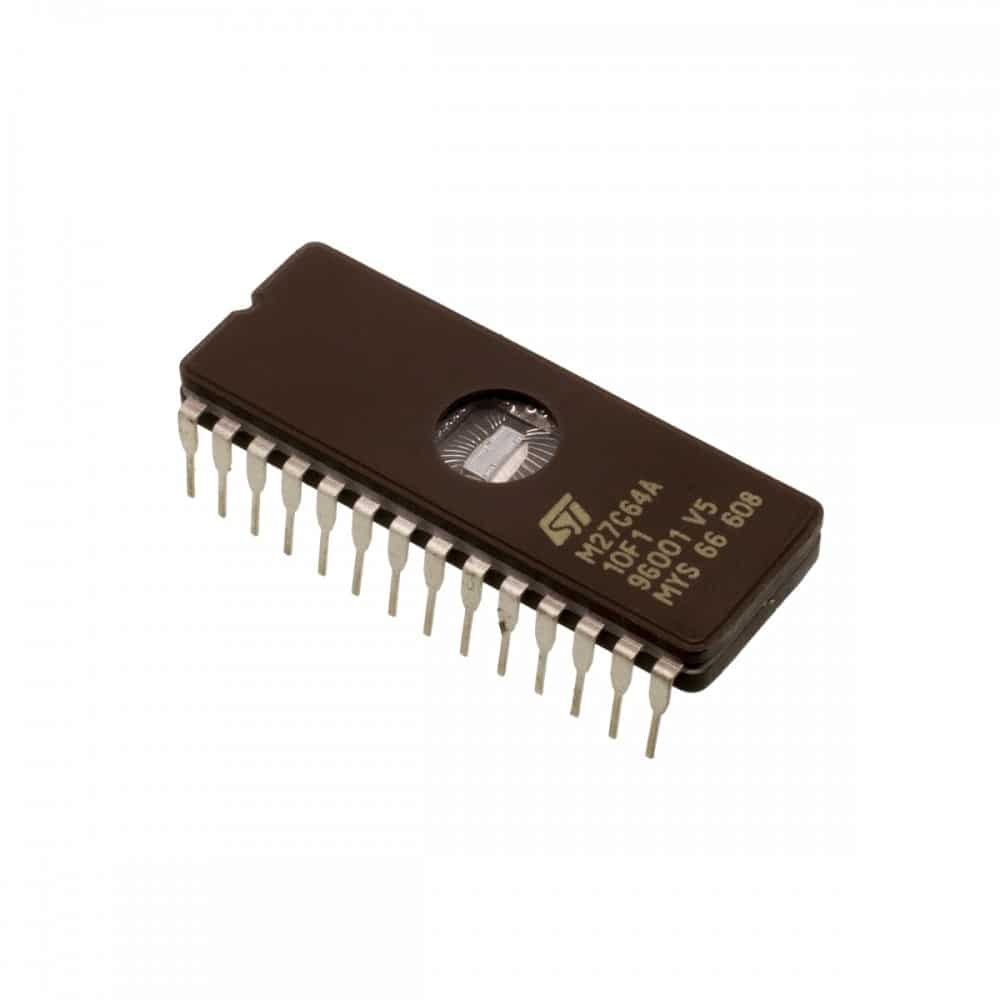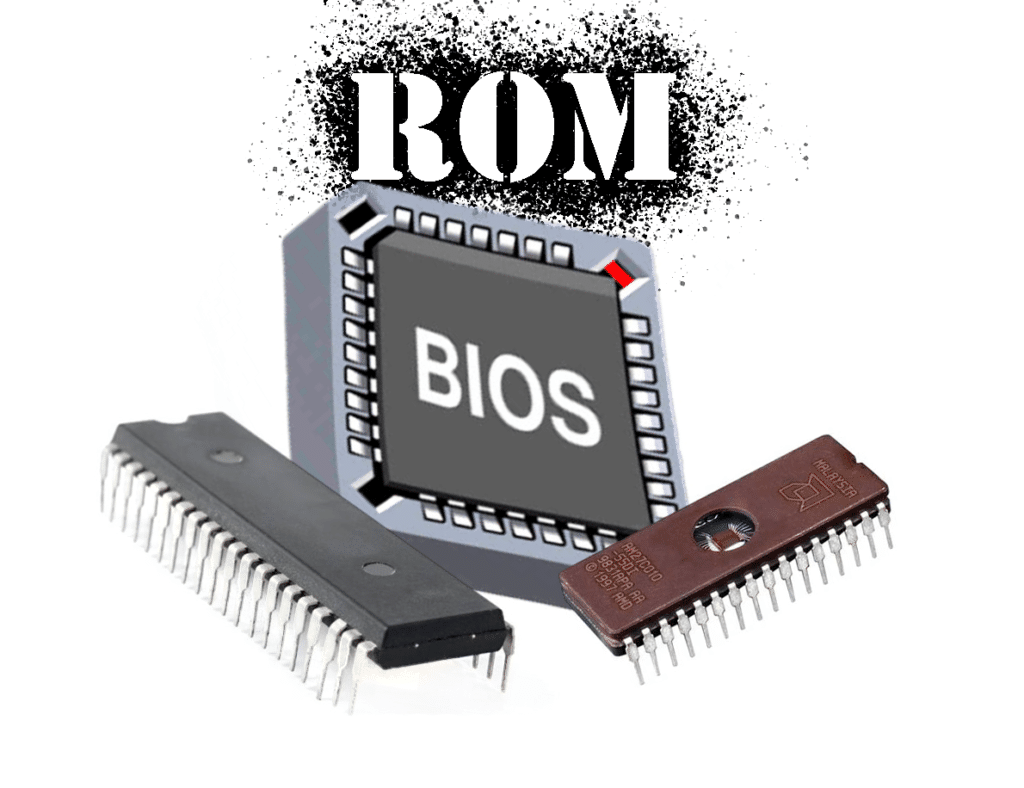Mostly we don't pay too much attention to certain internal devices of the PC, and one of them is the ROM memory. It is one of the most significant components that make up a computer, since it is a more than essential piece in the chain of starting up a computer. In this article we will tell you What is ROM Memory, its types and characteristics.

What is ROM memory?
ROM Memory or also distinguished as Read-Only Memory is a storage fragment used in computers and electronic equipment, which only approves the search reading but does not approve your manuscript, regardless of the existence or not of a power or energy source. .
The data stored in the ROM memory cannot be altered or modified, or at least not in a dizzying or simple way. It is especially used to attach firmware 2, which is nothing more than a program related to a specific hardware and is insufficiently likely to require regular updates or other necessary items for the operation of the equipment, such as the programs that start the computer to perform diagnostics.
In the strictest mode, it only reviews a ROM skin made of save data invariably, so its content cannot be modified in any way. However, newer ROMs (such as EPROMs and Flash EEPROMs) manage to be effectively erased and reprogrammed many times and are still called "read-only memory" or "ROM."
The reason to keep calling them is that the reprogramming process is usually very small, comparatively slow, and usually doesn't allow writing to random locations in memory. Although the ROM is simple, flashable hardware is more adaptable and cheaper, which is why older ROM skins are rarely seen on hardware produced after 2007.
ROM function
Basically, the job of your computer's internal ROM (especially in a computer) is to keep all the essential boot codes and procedures stored and unchanged, so that the PC can be booted every day, at all times, and without any changes. every time we turn it on in the same way.
Among the many tasks that manage the boot process of the PC that the ROM memory performs, one of them is extremely important and that is to start the operating system of the computer. We know that without it, today's computers would rarely be used. The ROM is also responsible for performing all initial system scans and inspections, as well as multiple control routines for all input and output peripherals.
ROM Memory Types
These were the first ROMs founded and drafted because their pseudonyms dictate that they only have the read-only nature of the data saved on them. Like other adaptations of ROM memory, they have the ability to work independently of the electrical energy that circulates in the device to store the information operated on them, and their composition is mainly silicon and silicate. They have the ability to transmit and transport electrical energy.
The automatic power circulating in the computer is irrelevant, but the waves of currents generated by electrical power are still needed to store data.
Basically, there are two types of memory that are used to store device startup routines: programmable and non-programmable. The second type, composed of ROM memory and PROM memory, is no longer used in the field of computing, because they have been replaced by memories that can be overwritten, which means, the first type of memory, in which the EPROM and EEPROM memory. The types of memories are:
ROM (Read Only Memory)
ROM (Read Only Memory) in English, consisted of the initial read-only character memory manufactured. To store information, a program was used that involved the use of silicone plates and masks, so manual operations were impossible. ROM type memory was replaced by EPROM and EEPROM type memories, where the latter can be overwritten.
Currently, such ROM memories are not used in the structure of computers or mobile connectors because they are considered obsolete, not very versatile and, in addition to being replaced, they are very expensive to create and maintain. It is only viable in the hands of experienced professionals in the field of computing. If the components are repairable and irreversibly damaged, it will bring continuous financial expense to the computer user.
PROM (Programmable Read Only Memory)
PROM memories or Programmable Read Only Memory have a special quality that their predecessors did not have. They manage to be configured and only manage to read the information integrated and saved in them. The creation and implementation of this model of ROM memory dates back to the 1950s. The use of these involves that a voltage of twelve (12) volts to twenty (20) volts can be handled to store information in memory, because the inversion mentioned above generates a voltage that activates the memory function involved.
Similarly, PROM memory has a series of diodes bearing the pseudonym "ROM Programmer" on its integrated circuit, and processes binary codes to program and fulfill its functions. In the case of electrical wave overload, the binary value 1 in these memories corresponds to the resistance and functional performance of the memory, while the diodes receive the binary value 0 when the overload is removed and their current passes, that is, it is stable as fluid.
However, it should be noted that the disadvantage of these components is that the diodes can be damaged by electrical discharges caused by overloads, causing uselessness and dissipation in the computer market due to their high costs. These memories cannot meet the needs established by users to store their information.
EPROM (Erasable Programmable Read Only Memory)
EPROM memory is the most used in all mobile equipment such as cell phones, processors and even amusement and information machines. It also stipulates that the data storage memory has unalterably the power and quality required for multiple programming, in addition to the basic configuration and input data can be deleted and modified. The abbreviation for EPROM memory in Spanish is “Programmable and Erasable Read Only Memory”.
They have a special quality of maintenance and classification, which is carried out by a special method through the use of high intensity irradiation or luminosity, that is, like ultraviolet light, which has a powerful energy quality, it manages to neutralize any failure in memory. and manages to repair the aforementioned errors in a simple and fast way.
EEPROM
This is a model of ROM memory that can be programmed, erased and energetically reprogrammed, which is unlike EPROM that must be erased by means of equipment that emits ultraviolet light and tends to be sensitive memories.
Unlike other ROMs, this memory has electrical power and studies each review in an absolute way to carry out in-depth inspections to guarantee excellent data completion. However, due to the painstaking and in-depth analysis of the data executed by this ROM mode, if the data is handled and waited incorrectly, its function can slow down quickly. The abbreviation for EEPROM memory in Spanish is “Electrically Erasable Programmable Read Only Memory”.
EAROM
It is a model of EEPROM and manages to change one bit at a time. The write procedure is too late and again requires a higher voltage, usually about twelve (12) volts, and the same is used for the read input. EAROM is suitable for applications that often do not require a partial rewrite.
EARM can be used as a non-volatile buffer to get key notification about the procedure representation. In various functions, EAROM has been superseded by network-provided CMOS RAM and backed by lithium batteries. The abbreviation for EAROM memory in Spanish is “Electrically Alterable Read-Only Memory”.
Flash Memory
This memory is a recent model of EEPROM devised in 1984. Flash memory is more agile to erase and rewrite than common EEPROM, and current sketches further describe high endurance greater than one million (1.000.000) times. periods.
Modern NAND Flash has effective use of silicon chip area, resulting in individual ICs with the capacity of up to 32 GB as of 2007; This quality, along with its physical strength and durability, has made it easy for NAND Flash to replace magnetic in some applications (such as USB flash drives). Flash memory is sometimes called Flash ROM or Flash EEPROM when used as a replacement for older ROM types, but not in applications that take advantage of the ability to be altered quickly and frequently.
Reading Speed
Although the respective correlation between the speed of RAM and ROM memory has changed over the years, since 2.007, RAM is read faster than most ROMs, so the contents of the ROM can be transferred normally to the RAM.
Write speed
For electrically writable ROM types, the write speed is always much slower than the read speed. The latter may require abnormally high voltages, jumpers to enable write mode, and special unlock commands. NAND flash memory achieves the highest write speed among all types of reprogrammable ROM, while writing in large blocks of memory cells, reaching 15MB/s.
Difference Between ROM, EPROM and EEPROM Memories
The difference between them is very precise and obvious, because the first type of ROM memory is only used to read the input data, which corresponds to the main data of the operating system, including Framework, Firmware and, first of all, the BIOS of the computer cannot modify data or applications. Programs as internal configuration, thus avoiding software updates for the special and effective development of the device hardware.
Similarly, the above-mentioned qualities are removed in EPROM and EEPROM ROM, so the above-mentioned data has a newer and up-to-date status, which makes it more operational, and also provides users with better quality, for example, more traditional, simpler and newer performance. As for the functions of the computer and all the software in it, likewise, due to the quality of the data modification and updating, a smooth and stable interaction between the software and the hardware of the device can be carried out. .
As for the ROM memory, since the data to be processed in the computer is programmed in the main part by default, writing is not allowed. However, if the data is entered by means of a reprogrammed program in the memory in question, they are added and blocked to prevent any type of writing, deletion or even theft of the information stored in it.
On the contrary, the ROM EPROM and EEPROM memories do have the quality that allows a new programming in them, to also be able to update the controller and any type of software that has been programmed, entered and saved in said memory. And the data is not pre-programmed in this type of ROM memory, which allows for better usability, and even this memory can be realized effectively, simply and cheaply.
If you found this topic very interesting What is ROM Memory do not hesitate to enter the following links that are also very significant for you who are a good reader.
Discover all about the hardware classification and what are their types
Enter and meet the Types of PC Cases its definition, characteristics and more
Meet and discover the types of Electronic components that exist, their classification and functions
